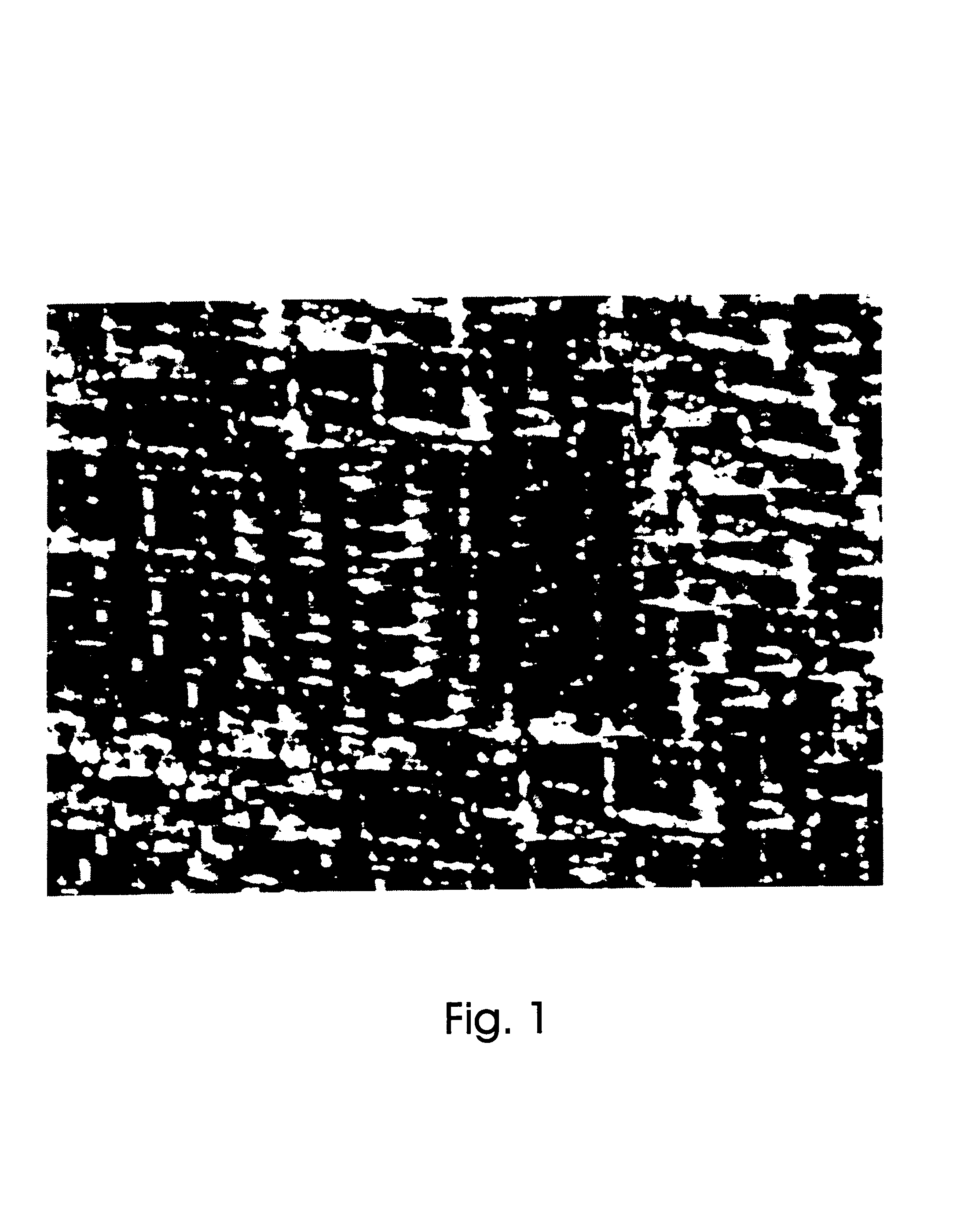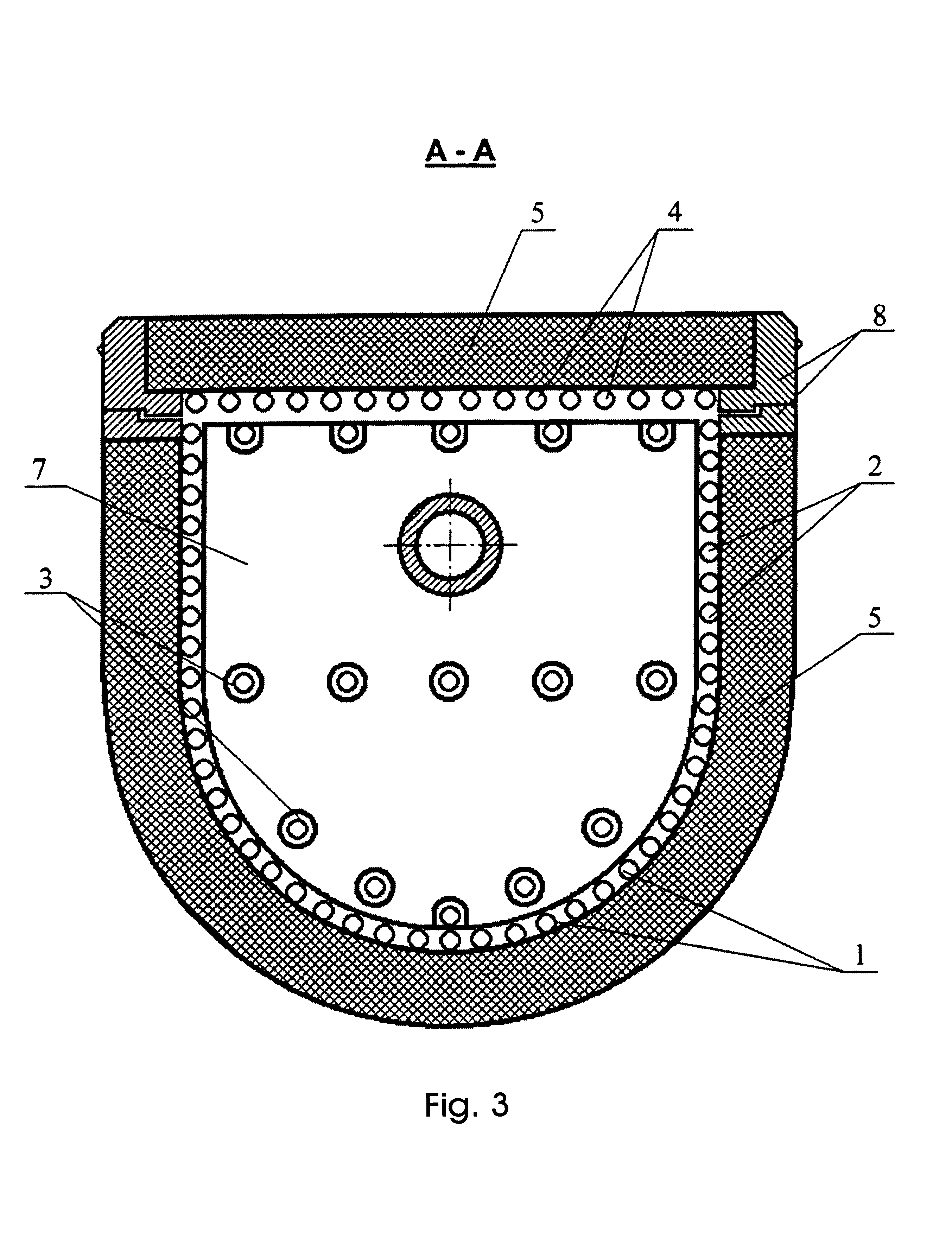Polycrystalline material, process for producing thereof, and articles manufactured therefrom
- Summary
- Abstract
- Description
- Claims
- Application Information
AI Technical Summary
Benefits of technology
Problems solved by technology
Method used
Image
Examples
example 1
[0059]For carrying out the process, a device is used, which is shown diagrammatically in FIG. 1, FIG. 2 and FIG. 3. A charge consisting of 32.062 kg of ZrO2 (97 mol. %) and 1.938 kg of Y2O3 (3 mol. %) is loaded into base 1 of a container having a length of 250 mm, a height of its vertical walls of 90 mm, and a diameter of its semicylinder of 150 mm. The loaded charge is thoroughly rammed. 30 g of metallic zirconium is added to the charge, and 2 g of Y2O3 is added to preserve the molar ratio. The container is closed with cover 4, HF oscillator 10 is switched on, initial melting is started, and then gradually all the charge is melted by moving the container in a horizontal direction relative to the inductor with a speed of 100 mm / hr. After the charge is melted, the melt is held for 8 hours. Then vacuum pump 14 is coupled via regulating valve 13, a rarefaction of 300 mm Hg is created, and the container is moved in a reverse direction with a speed of 1 mm / hr. Crystallization of the subs...
example 2
[0061]A charge having a composition analogous to the composition of the charge, described in Example 1 is loaded into the container, and crystallization is carried out under conditions specified in Example 1, but under normal pressure. A material with a heterogeneous composition and surface cracks is obtained (FIG. 4).
[0062]It should be noted that any inobservance of the claimed conditions of obtaining material leads to disturbance of the material homogeneity and to the appearance surface cracks.
example 3
[0063]For the synthesis, a charge is used, consisting of 29.64 kg (96.5 mol. %) of ZrO2 and 0.36 kg (3.5 mol. %) of MgO. To initiate melting, 30 g of metallic zirconium is introduced, and additionally 5 g of MgO to compensate for metal oxide formed during oxidation. Melting and crystallization are carried out as described in Example 1, with the exception that after cooling the melt to 1400° C. remelting and crystallization are carried out with a speed of 0.5 mm / hr.
[0064]A plate of partially stabilized polycrystalline single-phase zirconium dioxide is formed, having no defects, a breaking strength of 13 MPa / m2 (as determined by the method of chevron notch) and of 12 MPa / m2 (as determined by the method of ball indentation).
[0065]The plate thickness is 50 mm, surface area is 260 cm2.
PUM
| Property | Measurement | Unit |
|---|---|---|
| Temperature | aaaaa | aaaaa |
| Temperature | aaaaa | aaaaa |
| Temperature | aaaaa | aaaaa |
Abstract
Description
Claims
Application Information
 Login to View More
Login to View More - R&D
- Intellectual Property
- Life Sciences
- Materials
- Tech Scout
- Unparalleled Data Quality
- Higher Quality Content
- 60% Fewer Hallucinations
Browse by: Latest US Patents, China's latest patents, Technical Efficacy Thesaurus, Application Domain, Technology Topic, Popular Technical Reports.
© 2025 PatSnap. All rights reserved.Legal|Privacy policy|Modern Slavery Act Transparency Statement|Sitemap|About US| Contact US: help@patsnap.com



